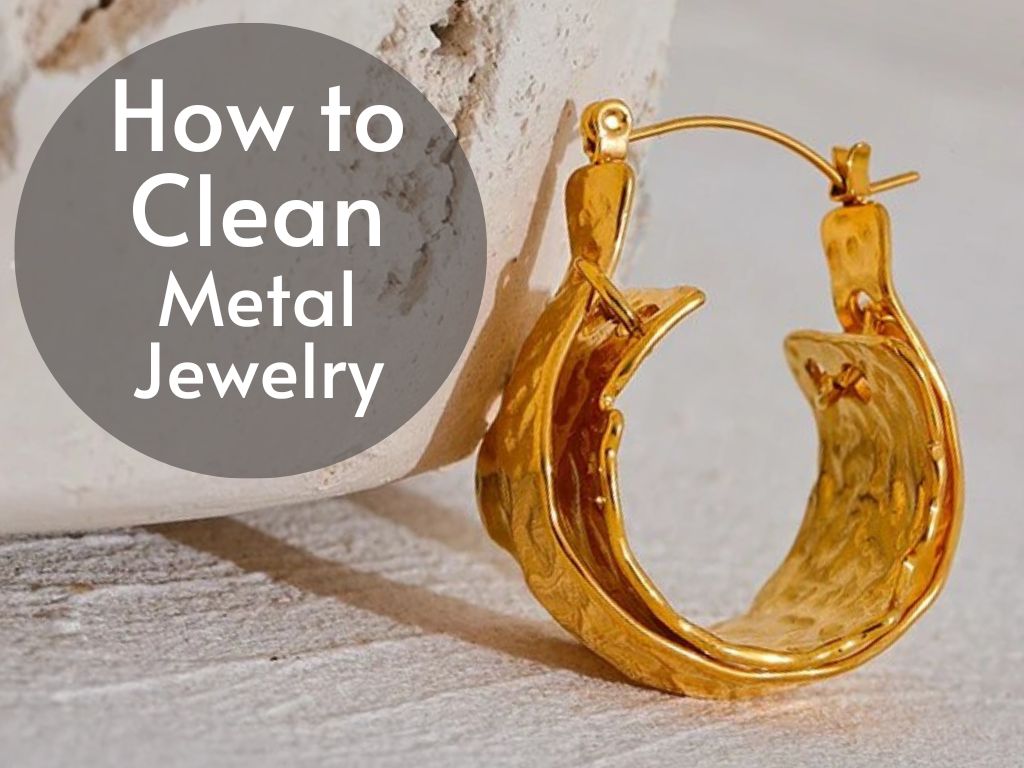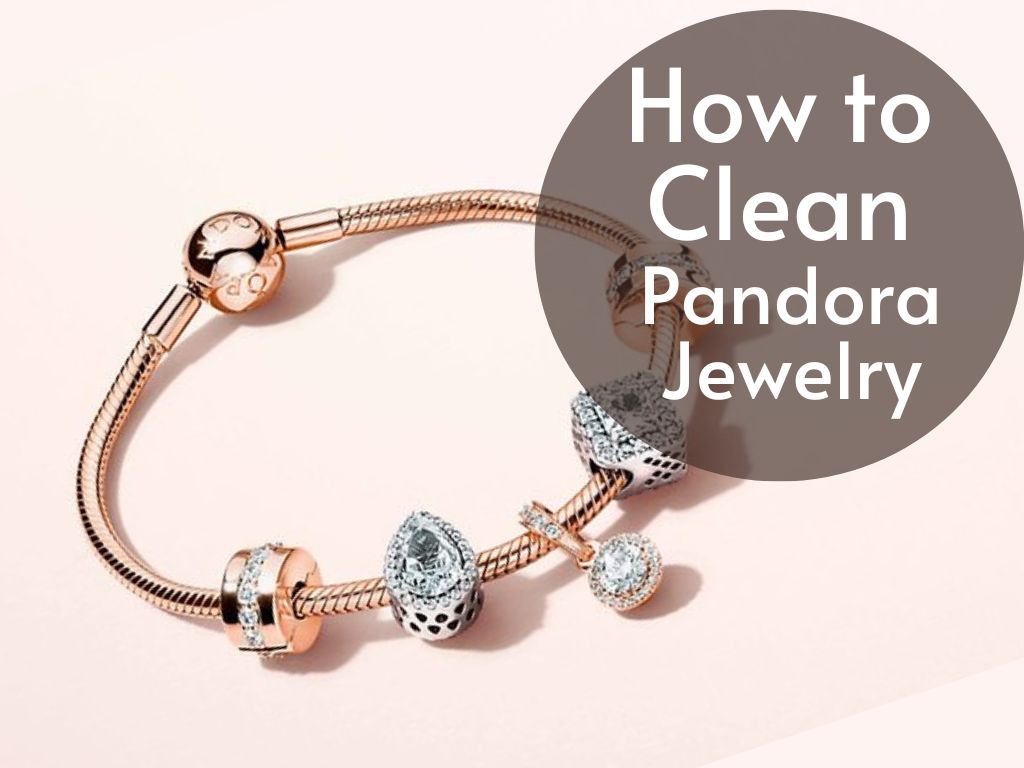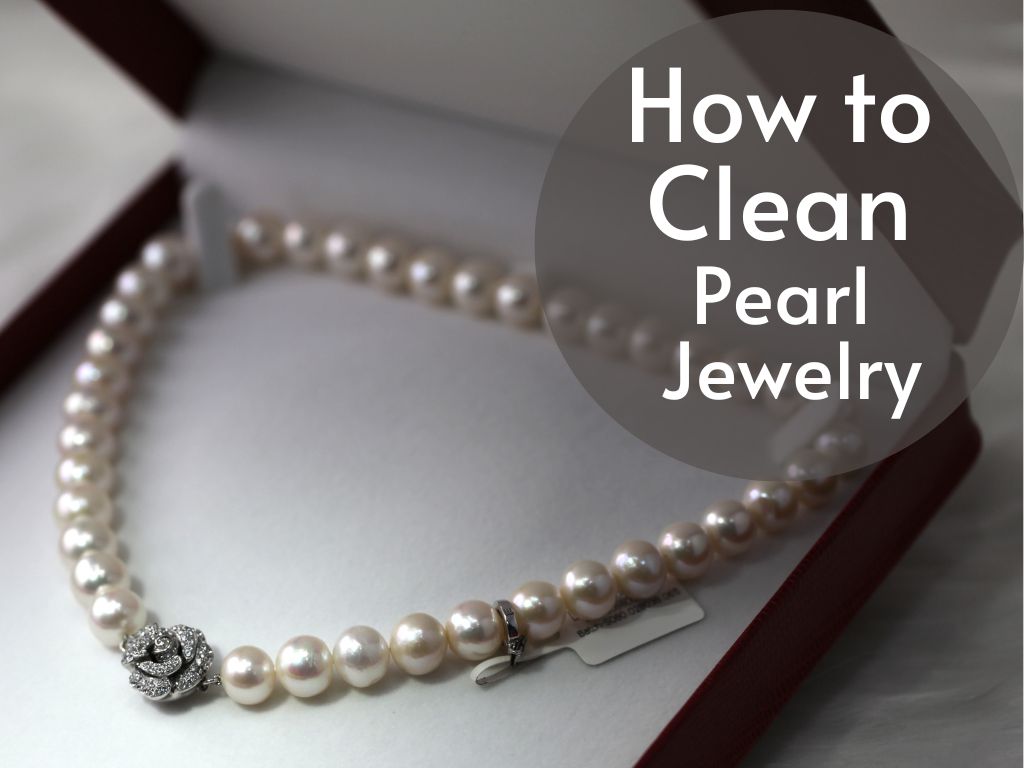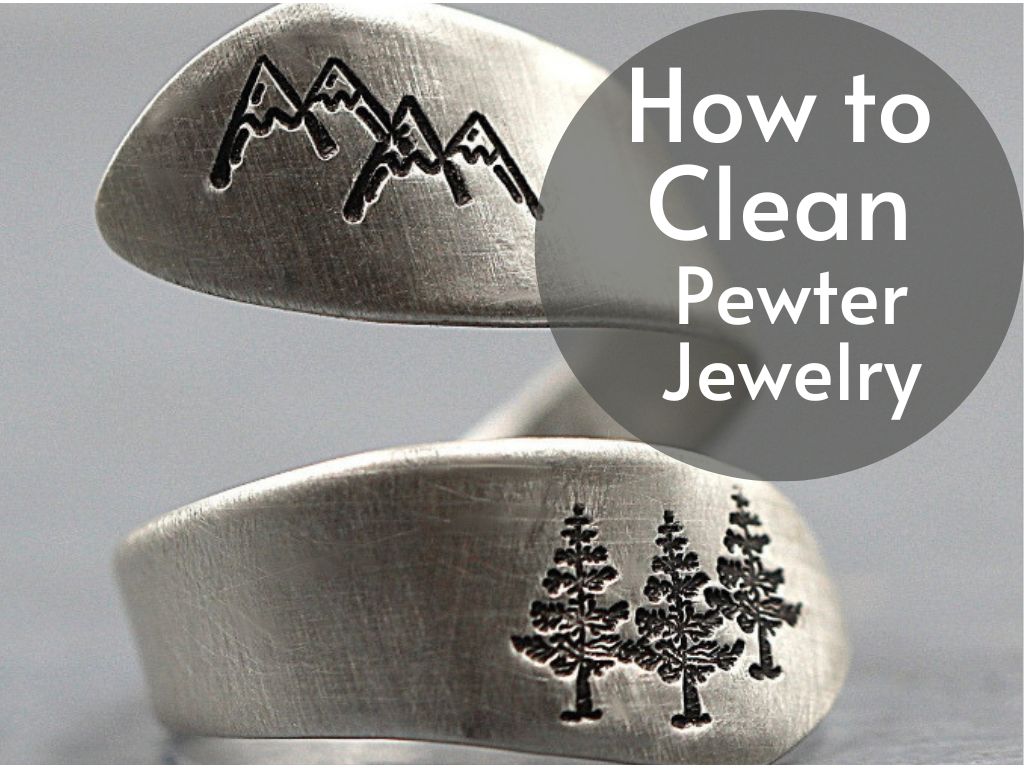Keeping your jewelry clean and well-maintained is essential to preserving its beauty and longevity. Over time, everyday wear and exposure to elements such as dirt, oils, and chemicals can cause your precious pieces to lose their shine or even become damaged. Regular cleaning ensures that your jewelry stays in optimal condition, allowing you to enjoy wearing it for years to come.
Importance of Cleaning Jewelry Regularly
Cleaning your jewelry regularly is not just about maintaining its aesthetic appeal but also about ensuring its durability. Accumulated dirt and grime can corrode the metal surfaces of your jewelry, leading to tarnish or even structural damage. Additionally, body oils, lotions, and perfumes can adhere to gemstones or precious metals, diminishing their brilliance over time.
Regular cleaning removes these substances and prevents them from causing long-term harm. By staying diligent with cleaning routines, you protect your investment while keeping your jewelry looking as beautiful as the day you acquired it.
Benefits of Using Household Products for Cleaning
The use of household products for cleaning jewelry offers various advantages over commercial cleaners. First and foremost is the cost-effectiveness; many effective cleaning solutions can be made using items readily available in most homes. Secondly, household products are generally milder than commercially available cleaners that may contain harsh chemicals that could potentially damage delicate gemstones or metals.
Besides being gentle on your precious pieces, using household products also provides a sense of reassurance regarding the ingredients being used in the cleaning process since you have control over what goes into the solution. Furthermore, incorporating everyday items into your cleaning routine allows for a more sustainable approach by reducing reliance on single-purpose cleaners packaged in plastic bottles.
Overview of the Step-by-Step Process
The step-by-step process for cleaning jewelry with household products generally involves a few key stages: preparation, cleaning, rinsing, and drying. Each type of jewelry requires specific care, depending on the materials involved.
Preparation involves gathering the necessary supplies, which typically include mild dish soap or baby shampoo, baking soda or toothpaste (non-gel), white vinegar or lemon juice, a soft-bristle toothbrush or makeup brush, and a microfiber cloth or lint-free cloth. The cleaning process differs depending on whether you are dealing with precious metals like gold, silver, or platinum, or gemstones such as diamonds, emeralds, and sapphires.
Each material has its own vulnerabilities and requires tailored care to avoid any potential damage. Following the appropriate cleaning method ensures that your jewelry is thoroughly cleaned without compromising its integrity.
Understanding Different Types of Jewelry
Precious Metals (Gold, Silver, Platinum)
Precious metals like gold, silver, and platinum are commonly used in jewelry due to their durability and lustrous appearance. Each metal has its own unique characteristics and requires specific care to maintain their shine and longevity.
Gold is a soft metal that is susceptible to scratching and tarnishing. To keep gold jewelry looking its best, it’s important to avoid exposing it to harsh chemicals or abrasive materials.
Regular cleaning with a mild dish soap solution and gentle brushing using a soft-bristle toothbrush can help remove dirt and restore its shine. Additionally, storing gold jewelry separately in cloth pouches or individual compartments can prevent scratches caused by friction.
Silver jewelry is prone to tarnishing due to oxidation caused by exposure to air and moisture. To combat tarnish, regular cleaning with a baking soda paste can effectively remove discoloration without damaging the metal surface.
For severe tarnish or intricate designs where access is limited, the aluminum foil method works wonders—simply line a container with foil, add hot water mixed with salt and baking soda, place the silver pieces on top of the foil, let them sit for a few minutes, then rinse thoroughly. Platinum jewelry is highly durable but still requires maintenance to keep it looking its best.
Similar to gold cleaning methods, soaking platinum pieces in warm soapy water followed by gentle brushing will remove dirt or grime accumulated over time. Rinse thoroughly under running water after cleaning and dry properly using a lint-free cloth.
Gemstones (Diamonds, Emeralds, Sapphires)
Gemstone-adorned jewelry adds elegance and charm but demands special attention during the cleaning process due to their unique properties and vulnerabilities. Diamonds are the hardest gemstones; however they may still be susceptible to damage from rough handling or exposure to chemicals. To clean diamond jewelry, a gentle solution of warm soapy water is ideal.
Soak the piece for a few minutes, then use a soft brush to remove any dirt or debris around the stone. Rinse thoroughly and dry with a clean cloth to restore its dazzling brilliance.
Emeralds are relatively softer gemstones known for their stunning green color. They are delicate and require extra care during cleaning to avoid scratches or cracks.
To clean emerald jewelry, it is best to avoid using harsh chemicals or ultrasonic cleaners. Instead, wipe the pieces gently with a damp cloth and dry them immediately after.
Sapphires are durable gemstones available in various colors, most commonly blue. While they are generally resistant to scratching, prolonged exposure to chemicals or accidental impacts can cause damage.
Cleaning sapphire jewelry involves soaking it in warm soapy water and using a soft brush to gently remove any dirt or grime trapped in crevices. Remember to rinse thoroughly and dry properly after cleaning.
Understanding the characteristics and vulnerabilities of different types of jewelry is essential for proper care and maintenance. Following these guidelines will help ensure that your precious metals and gemstone jewelry remain beautiful and last for years to come.
Gathering the Necessary Supplies
Household Products Commonly Used for Jewelry Cleaning:
When it comes to cleaning jewelry, you don’t need to rush to the jewelry store or invest in expensive specialized products. Instead, you can find several household items that work wonders in restoring the brilliance of your beloved pieces. Let’s explore some of these commonly used household products and how they can be utilized effectively in your jewelry cleaning routine. Mild Dish Soap or Baby Shampoo:
Starting with the basics, mild dish soap or baby shampoo can be highly effective in removing dirt and grime from your jewelry. These gentle cleansers are designed to break down oils and residues without causing damage. Ensure that the product is free from harsh chemicals such as bleach or abrasive agents that may harm delicate gemstones or precious metals. Baking Soda or Toothpaste (Non-Gel):
Baking soda is a versatile substance with excellent cleaning properties, making it an ideal option for restoring shine to your jewelry. Its mild abrasive nature helps remove stubborn stains without scratching the surface of most gemstones and metals. Toothpaste (non-gel) also acts as a gentle abrasive cleaner due to its fine particles, making it particularly useful for intricate details or hard-to-reach areas. White Vinegar or Lemon Juice:
White vinegar and lemon juice, both acidic in nature, are exceptional natural cleaners that can help dissolve tarnish on certain types of jewelry. They effectively remove mineral deposits and restore shine to dull pieces; however, caution must be exercised while using them on porous gemstones such as pearls or opals as their acidity may cause damage. Soft-Bristle Toothbrush or Makeup Brush:
A soft-bristle toothbrush dedicated solely for jewelry cleaning purposes is an essential tool that allows you to gently scrub away dirt from intricate patterns and settings without scratching the precious surfaces. Alternatively, a makeup brush with soft bristles can also be used to remove dust and grime from delicate pieces, ensuring thorough cleaning while minimizing the risk of damage. Microfiber Cloth or Lint-Free Cloth:
After cleaning your jewelry pieces, a microfiber cloth or lint-free cloth proves to be indispensable when it comes to drying and polishing. These materials are gentle on the surface of jewelry and absorb moisture effectively, leaving your prized possessions sparkling without any unsightly residue or lint marks.
Remember that not all household products are suitable for every type of jewelry. Always consider the specific care requirements for each piece before using any cleaning agent.
With these readily available supplies in hand, you are now equipped to embark on a successful journey towards restoring your jewelry’s brilliance and maintaining its longevity. Stay tuned for the next section as we delve into the detailed cleaning process for different types of jewelry including precious metals and gemstones.
Cleaning Precious Metals
Cleaning Gold Jewelry
Gold jewelry is a timeless and valuable accessory that requires regular cleaning to maintain its lustrous shine. To clean your gold jewelry, start by soaking it in a small bowl filled with warm soapy water.
Ensure the soap you use is mild and free from harsh chemicals that could potentially damage the metal. Gently swish the jewelry around in the soapy water for a few minutes to allow the soap to penetrate any built-up dirt or grime.
Next, take a soft-bristle toothbrush and gently brush your gold jewelry, paying special attention to hard-to-reach areas where dirt may accumulate, such as the crevices of intricate designs or settings. Be cautious not to brush too vigorously, as this can cause scratches on delicate surfaces or loosen gemstones if present.
After brushing, rinse the jewelry under warm running water to remove any remaining soap residue. Pat dry with a clean microfiber cloth or lint-free cloth, ensuring that all moisture is removed before storing or wearing your gold jewelry again.
Cleaning Silver Jewelry
Silver jewelry adds sophistication and elegance to any ensemble but tends to tarnish over time due to exposure to air and moisture. To bring back its brilliance, create a baking soda paste by mixing three parts baking soda with one part water until it forms a thick consistency. Gently rub this paste onto your silver jewelry using a soft cloth or sponge, focusing on tarnished areas.
The mild abrasive nature of baking soda will help remove tarnish without causing harm to the delicate silver surface. For more stubborn tarnish on silver pieces that have intricate designs or hard-to-reach places, consider using an aluminum foil method: line a small container with aluminum foil and fill it halfway with boiling water mixed with one tablespoon of salt and one tablespoon of baking soda.
Place your silver items on the foil, ensuring they touch it, and let them sit in the solution for a few minutes. The tarnish will transfer from the silver to the aluminum foil, restoring its shine.
After cleaning, rinse silver jewelry under warm running water to remove any residue. Dry thoroughly with a soft cloth and store it in a dry place away from moisture to prevent future tarnishing.
Cleaning Platinum Jewelry
Platinum jewelry is known for its durability and resistance to tarnish, but regular cleaning is still necessary to keep it looking its best. Begin by soaking your platinum pieces in warm soapy water for a few minutes. The gentle soap will help loosen any dirt or debris that may have accumulated.
Next, use a soft brush (such as a toothbrush or makeup brush) to gently scrub away dirt from all surfaces of your platinum jewelry. Be cautious not to apply excessive force while brushing, as this could potentially scratch the metal.
After brushing, thoroughly rinse your platinum jewelry under warm water to ensure all soap residue is removed. Pat dry with a clean microfiber cloth or lint-free cloth until completely dry before storing or wearing again.
Cleaning Gemstones
Cleaning Diamonds
Diamonds are prized gemstones that require special care during cleaning. Begin by soaking your diamond jewelry in warm soapy water for approximately 10-15 minutes. This step helps loosen any dirt or oils accumulated on the surface of the diamond.
After soaking, remove your diamond pieces from the soapy water and gently scrub them using a soft-bristle toothbrush or dedicated jewelry brush. Pay close attention to all sides of the diamond and its setting while brushing off any remaining dirt or grime.
To achieve maximum sparkle, rinse your diamond jewelry under warm running water while using gentle swishing motions with your fingers to ensure thorough rinsing. Pat dry with a soft microfiber cloth or lint-free cloth and admire the renewed brilliance of your diamonds.
Conclusion
Cleaning your jewelry with household products can be an easy and cost-effective way to maintain its beauty. By following the proper cleaning techniques for different types of jewelry, such as gold, silver, platinum, and gemstones like diamonds, you can keep your precious pieces looking their best for years to come. Regular cleaning not only restores the shine and sparkle but also helps prevent any potential damage caused by dirt buildup or chemical residue.
With a little effort and attention to detail, you can enjoy wearing your favorite jewelry with confidence, knowing that it is clean, well-maintained, and ready to dazzle on any occasion. Embrace the ritual of caring for your jewelry as a symbol of cherishing the moments it accompanies you through life’s journey.





